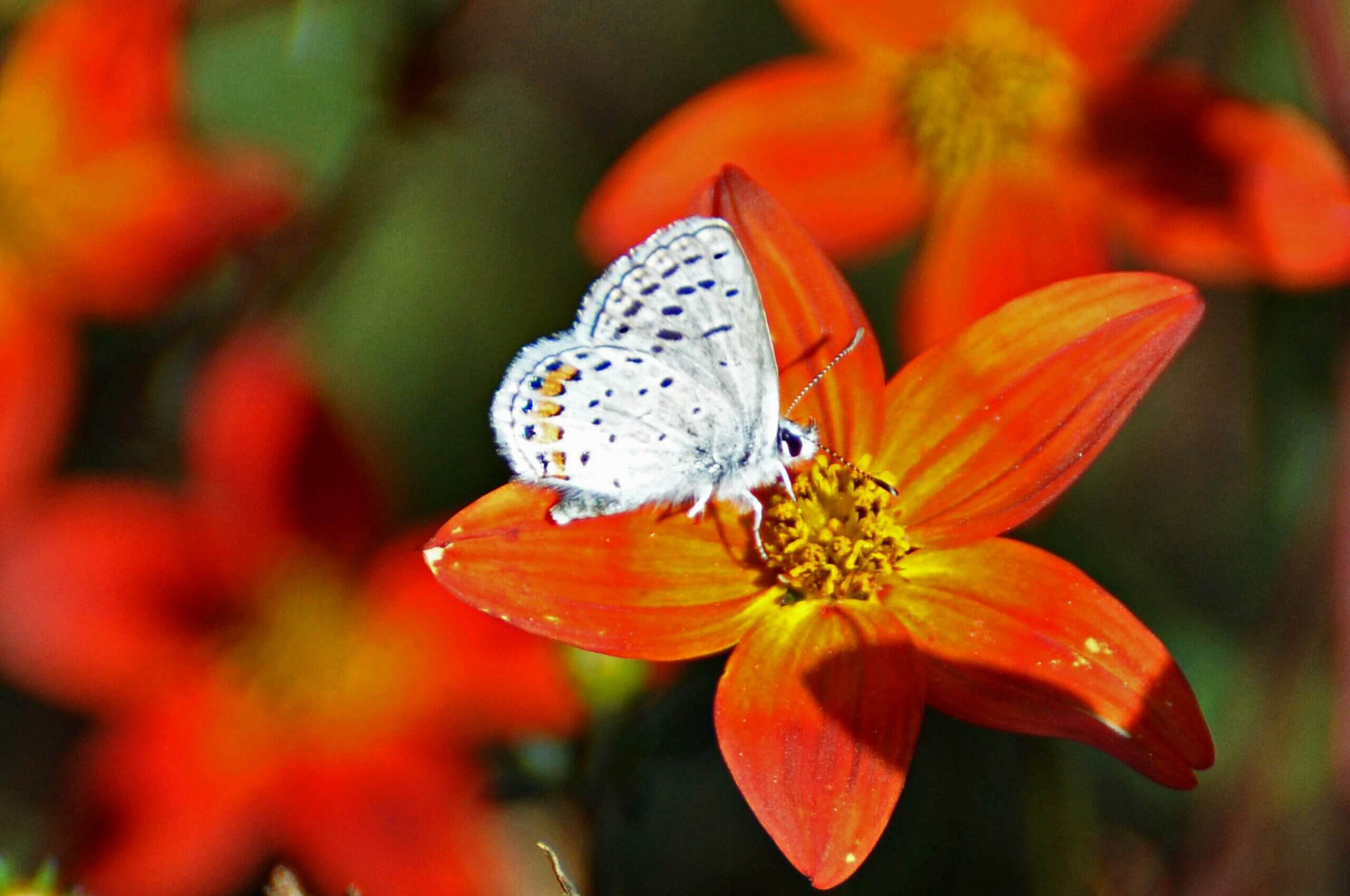The Acmon Blue Butterflies (Plebejus or Icaricia acmon) are fairly common and more widespread than some of the other gossamer wings (Lycaenidae). The Acmon Blue has a much longer flight period than many other blues; it visits gardens and can be seen in open fields and even along roadsides.
As with so many butterfly species, the butterflies are where their host plants are! The Acmon Blue larvae usually feed on plants in the pea (Fabaceae) family, but also on some plants within the knotweed (Polygonaceae) family, primarily various native buckwheats. The Acmon Blue, which often produces multiple generations each year, feeds interchangeably on plants in these two families, giving scientists a hint that there must be a chemical commonality between the two plant families.
The early spring males are easy to spot because they are so brilliantly blue. Females in spring are blue, also, but in summer generations their top wings are more grayish in color. Both males and females have orange blotches along the top and under sides of the hind wings, and if you look closely, there’s a silvery speck within each orange blotch.
One of the features I like the most is the white fringed edge of the wings and, just inside that, a thin black line.
The plants perhaps the most favored by the Acmon Blues are the small-statured perennial species of buckwheats. I grow Eriogonum nudum, E. latifolium, and E. grande rubescens, and all fairly close together in drifts along a step stone pathway. Eggs are often laid right where the flower pedicle comes from the main stem; larvae will feed on both flowers and foliage. The larvae look a bit like small, flatish slugs, except that the body is faintly sectioned, somewhat similar to how a sowbug looks. And most interesting of all, the larvae are tended to, and protected by ants! The larvae produce a sweet exudate like the honeydew aphids produce, so ants will manage and protect the larvae, just as they do with “herds” of aphids so that they can harvest the honeydew.
There have been many studies done, primarily in Europe, on the intricate symbiosis between ants and some species of Lycaenidae. Studies have shown that sometimes the larvae will even pupate within the nesting colony of ants. As soon as the butterfly ecloses from the pupae it needs to make a fast exit because at that point, the ants don’t have much use for them. Once you start reading about life strategies in some Lepidopteran species it seems stranger than fiction: there are caterpillars that live underwater; caterpillars that are predatory; and even some that are cannibalistic! John Feltwell’s book, The Natural History of Butterflies, is mostly about European species, but he does write in detail about these interesting studies.
The adult Blues favor small flowers as a nectar source. They visit buckwheat flowers, of course, where there are many tiny individual flowers in each umbel. Fogfruit (Lippia or Phylla nodiflora) also produces many tiny verbena-shaped flowers that a lot of other insects, including bees, also like to visit. I grow Lippia as a pathway plant; it grows tight to the ground where it’s walked on and doesn’t bloom much, but at the pathway edges it does bloom profusely in summer. In late summer, the Acmon Blues will often swarm coyote brush, especially the male plants, when they are in full bloom.
Another very small annual plant that is favored by the Acmon Blues is Spanish lotus (Lotus purshianus). It shows up in late summer, usually along roadsides, in the poorest, most compacted soils and is so tiny, with the palest of pink flowers, that it’s easy to overlook. The plants show up in fairly large drifts, so one can understand how they could support larvae. Other species of lotus are also used as host plants, including the short-lived native shrub Lotus scoparius (deerweed).


